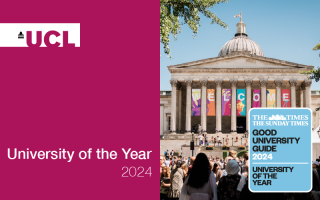Supervisors: Professor Torsten Baldeweg, Dr Frederique Liegeois
Neuroplasticity and brain connectomics: implications for post-surgical cognitive outcomes in children with epilepsy
Background:
Neurosurgical resection of epileptogenic cortex is an important treatment for children with medication-resistant focal epilepsy, which can result in excellent outcomes. However, in many children epileptogenic cortex is located in or near eloquent cortex - regions critical for language and movement and its localisation cannot be determined from normal anatomy. Since the early 2000 we have used functional MRI (fMRI) for eloquent cortex mapping to guide the neurosurgical programme at GOSH (Fig. 1). We have observed that about 40% of children have evidence of atypical language representation, e.g. right-sided dominance or crossed lateralisation – evidence of neuroplasticity to developmental insults. However, the factors that contribute to these atypical patterns have not been identified. Furthermore, the impact of surgical treatment on cognitive outcomes can be highly variable and difficult to predict for individual patients (1). We now wish to harness the power of our extensive clinical and neuroimaging dataset (n>400), the largest of any paediatric epilepsy programme in the world, to answer these important questions. We will also explore the richness of functional and structural brain connectomics in predicting individual clinical outcomes with greater precision.

Aims/Objectives:
1. Which factors enable language plasticity in children with developmental epileptogenic insults? Does language plasticity protect their cognitive abilities?
2. Can neuroimaging characteristics (e.g. of language dominance and localisation; functional and structural connectivity) help to predict post-surgical cognitive outcomes?
Methods:
We will use robust pipelines for processing of neuroimaging data that are in routine use but will also explore new approaches to estimating connectivity between brain regions using functional (2) and structural MRI (3). We also wish to explore the power of machine learning (AI) to predict outcomes on the basis of neuroimaging data, a methodology that we have developed for detecting epileptogenic lesions (4) and which is now being used to guide neurosurgical procedures (5). A close collaboration with the Digital Research Environment team at GOSH has enabled automated access of electronic hospital records and MRI scan archives, revolutionising research at our centre and placing data science at the heart of this project.
Timeline:

References:
1. Skirrow C, Cross JH, et al. Determinants of IQ outcome after focal epilepsy surgery in childhood: A longitudinal case-control neuroimaging study. Epilepsia. 2019 2019 May;60(5):872-884.
2. Croft, L., Baldeweg, T, et al. Vulnerability of the ventral language network in children with focal epilepsy. Brain. 2014 Aug;137(Pt 8):2245-57.
3. Liégeois FJ, Turner SJ, Mayes A, et al. Dorsal language stream anomalies in an inherited speech disorder. Brain. 2019;142(4):966‐977. doi:10.1093/brain/awz018.
4. Adler S, Wagstyl K, et al. Novel surface features for automated detection of focal cortical dysplasias in paediatric epilepsy. NeuroImage Clinical. 2016 Dec 30;14:18-27.
5. Wagstyl, K., Adler, S., et al. (2020). Planning stereoelectroencephalography using automated lesion detection. Epilepsia, 10.1111/epi.16574. https://doi.org/10.1111/epi.16574.
 Close
Close



